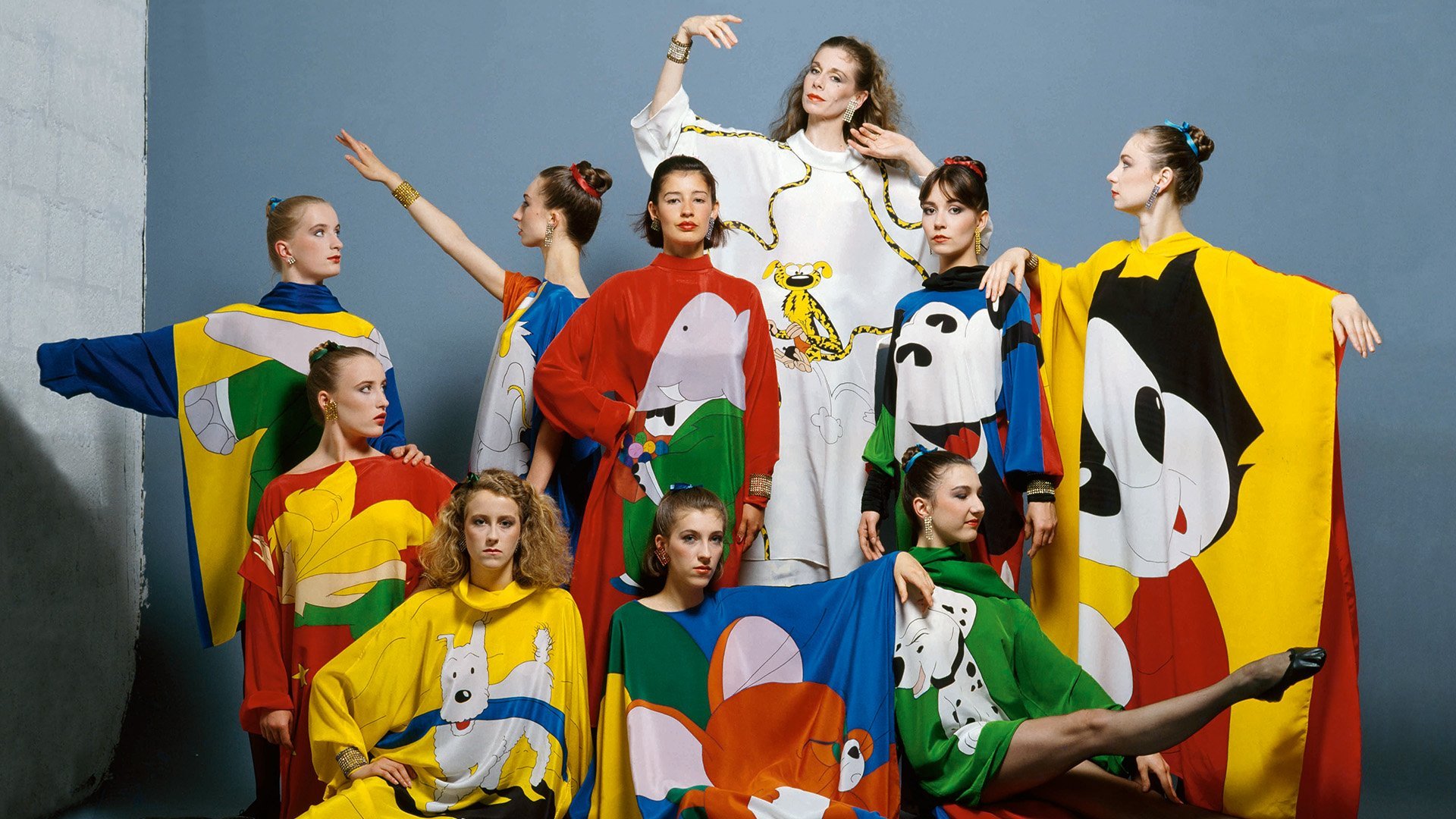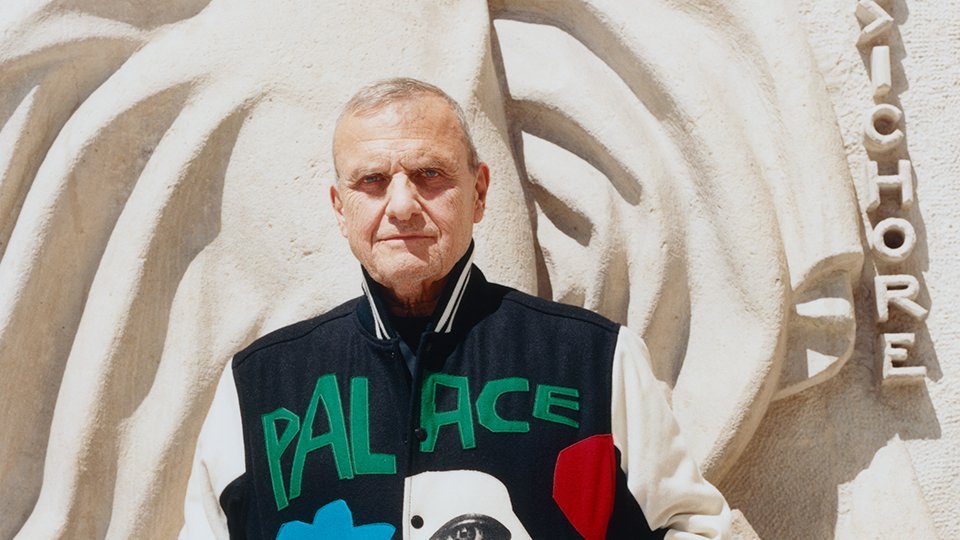
Jean-Charles de Castelbajac
IMAGINATION AT WORK
Les Abattoirs is hosting an exceptional exhibition dedicated to Jean-Charles de Castelbajac (born in 1949), a visionary fashion designer and multifaceted artist. Featuring nearly 300 works, including clothing, design objects, drawings and photographs, ‘L'Imagination au pouvoir’ (Imagination at work) invites visitors to discover the many facets of an artist whose inventiveness knows no bounds.
While fashion is his medium of choice, Jean-Charles de Castelbajac is above all an unclassifiable creator, as his work is a unique fusion of different artistic expressions. Appropriations and collaborations are at the heart of his practice and make dialogue a mode of creation in itself: between art, fashion, music, history, the sacred, pop culture and childhood. An explorer of the world and a witness to his era and its countless facets, the artist nourished his career from an early age with a quest for freedom and a deliberate rebelliousness, turning clothing into a work of art, armour and adornment. Escaping any fixed definition and playing with the boundaries between disciplines, his work transgresses codes and bears witness to an incisive view of an era in flux.
Fashion as an artistic medium
Proclaiming the power of imagination, the exhibition highlights the different dimensions of a body of work that began in the late 1960s and continues to this day. Through a rich and immersive thematic journey, punctuated by installations created especially for Les Abattoirs, Jean-Charles de Castelbajac, a versatile designer, offers an almost initiatory journey into his universe. The use of so-called poor materials – upcycling –, accumulation, collage and hybridisation are all gestures and experiments that play on the back-and-forth between fashion and art, resonating with the research of major movements in art history, including Arte Povera, New Realism and conceptual art. Clothing, drawings, photographs, design objects and accessories reveal his ability to transform materials and ideas, offering a space for artistic, historical and societal reflection – a total art form, in short.
Art and fashion are one and the same for Jean-Charles de Castelbajac. This alliance has led to rich collaborations which, together with his instantly recognisable colour palette, have become his signature: Robert Malaval, Keith Haring, Cindy Sherman, Bettina Rheims, Robert Mapplethorpe, Olivero Toscani and Lady Gaga rub shoulders with André Courrèges, Max Mara, Ligne Roset and liturgical commissions for World Youth Day and the reopening of Notre Dame de Paris. These encounters with his ‘contemporaries’, some of which are re-enacted in this exhibition, are a testament to the joyful virtuosity of an artist who never ceases to reinvent himself. It is this ability to imagine a different idea of fashion that is at the heart of this exhibition, the first dedicated to this medium at Les Abattoirs.
Biography
A creator and avant-garde artist, Jean-Charles de Castelbajac anticipated what today constitutes the foundations of new creation: art and fashion, appropriation, the principle of accumulation, and collaborations.
His multidisciplinary work, spanning art, fashion and design, is based on a limited colour palette of blue, yellow and red, one of the most beautiful examples of which was his clothing designs for Pope John Paul II, bishops and priests for World Youth Day in 1997.
Passionate about heraldry, the science of coats of arms, vexillology, the science of flags, semiotics, the study of signs, pop art and the world of childhood, his art and fashion bring together these dualities: the epic, history, traditions and the alternative.
He began his career as a designer in the late 1960s alongside his mother and founded the company Ko & Co in Limoges. His first statement garment was a coat cut from his boarding school blanket, as well as clothes made from mops, thus launching the concept of upcycling. He then founded the Jean-Charles de Castelbajac fashion house in 1978.
In 1974, he co-founded the ICEBERG brand, for which he designed the first cartoon sweaters in 1979. The following year, in 1975, he began a fruitful collaboration with the prestigious Max Mara fashion house and, thanks to its founder Achille Maramotti, soon launched a contemporary art collection, reflecting the richness of his passions. With Max Mara, he created ‘Sportmax,’ a line inspired by sport, then developed the breaking down of barriers between art and fashion that he had already begun, unconsciously, at the start of his career.
In the 1980s, he anticipated the current blurring of the boundaries between art and fashion through multiple collaborations with artists from all disciplines during his fashion shows: musicians, photographers and visual artists. He created painting dresses with Miquel Barceló, Ben and Robert Combas, invitations to his fashion shows with Robert Mapplethorpe, Keith Haring and Cindy Sherman, sets for his fashion shows with Xavier Veilhan and Pierre Bismuth, and music for his fashion shows with Malcolm McLaren and Pedro Winter.
From 1980 onwards, he practised the principle of accumulation with everyday objects, such as gloves and teddy bears, in the form of coats, jackets and sofas.
In 1986, his work was exhibited at the Fashion Institute and Technology in New York. In 2006, it was exhibited at the Victoria and Albert Museum in London, then at the Musée Galliera in Paris in 2007.
In 1993, he created two collections for Courrèges.
Also an artist, he created a 3,700 m² fresco for Orly Airport in Paris in 2015. In September 2018, he created a monumental work for the Paris Biennale at the Grand Palais.
From 2018 to 2022, he is artistic director of United Colors of Benetton. His artistic work is the subject of an exhibition entitled Le Peuple de demain (The People of Tomorrow) at the Centre Pompidou's children's gallery in 2021-2022, presented at the West Bund Museum in Shanghai and the Centre Pompidou Malaga in 2023.
In 2022, he will also be present at the Mobilier National with the scenography for the exhibition No Taste for Bad Taste, retracing 40 years of French design, and with a carte blanche entitled L'atour d'assises, focusing on French styles.
In June 2024, he will install a permanent 15-metre trellis sculpture on Boulevard Saint Germain in Paris, on the wall of the Société de Géographie, called ‘L'Ange Géographe’ (The Geographer Angel).
He has been chosen by the Diocese of Paris to design the vestments and liturgical ornaments for the reopening of Notre-Dame de Paris in December 2024.
@jcdecastelbajac
www.jeancharlesdecastelbajac.com
Curators
Lauriane Gricourt, Director, Les Abattoirs
Julien Michel, Research and Exhibitions Officer, Les Abattoirs
Scenography
Pascal Rodriguez
With the support of the City of Toulouse / Toulouse Métropole


The exhibition is sponsored by: Teréga accélérateur d'énergies, Banque Populaire Occitane, La CAPEB, Galeries Lafayette, Air France, Anne & Valentin, POSCA, Doudou et Compagnie, Histoire d'Ours, Unikalo, Tisséo
In media partnership with: ICI Occitanie, La Dépêche du Midi, Les Inrockuptibles
The opening cocktail is offered by: Lillet

Summer 1982, Tribute to comic strips, dresses painted on silk worn by the Paris Opéra ballet company, photo © Bettina Rheims, courtesy Fonds de Dotation de l’Institut pour la photographie © Adagp, Paris, 2025
Informations pratiques
Location
Les Abattoirs
Opening on Thursday 11 December 2025 at 6pm

